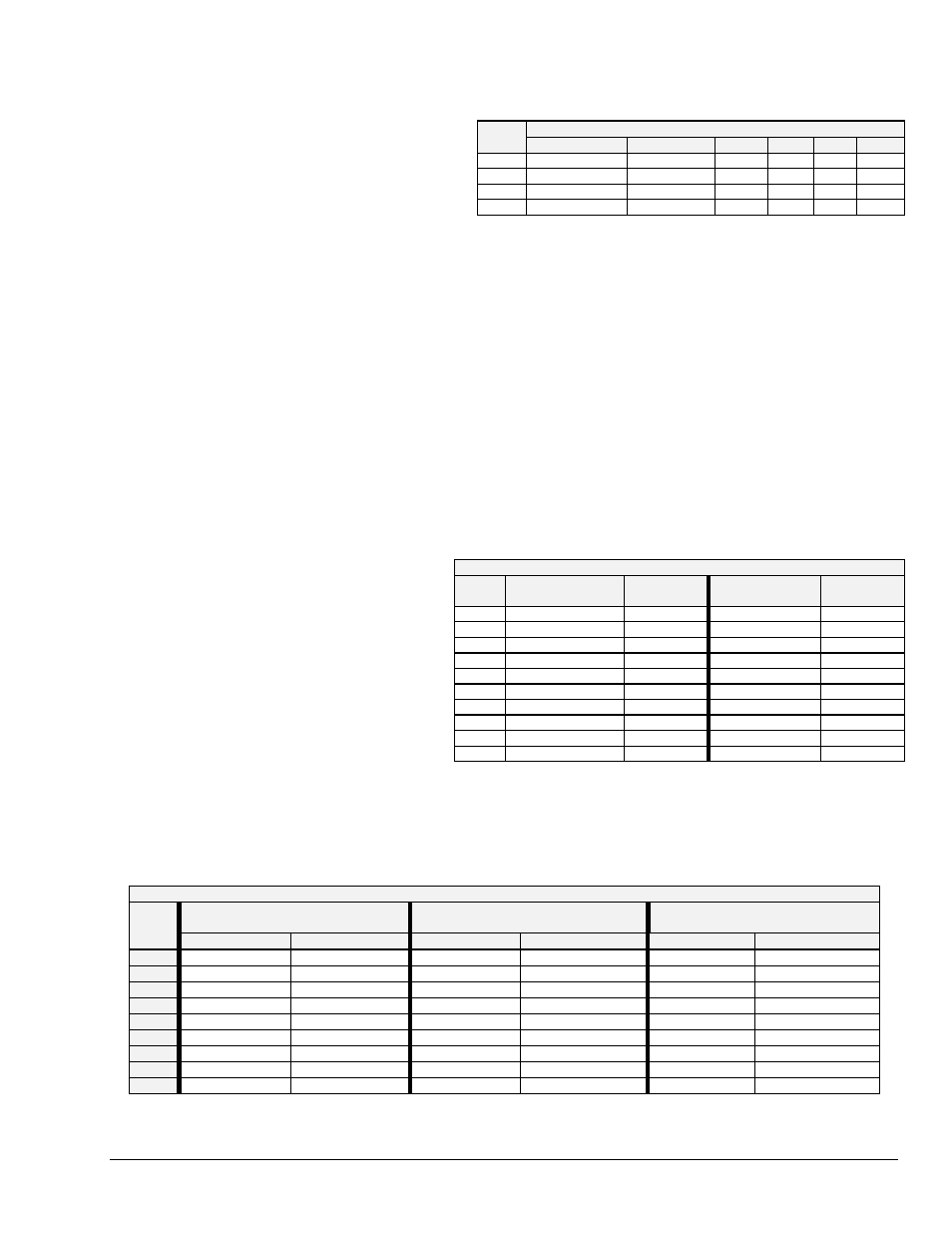Measurement Computing TempBook rev.3.0 User Manual
Page 147

TempBook User’s Manual
daqCommand Reference (Enhanced API) 11-23
The temperature conversion functions take input data from one or more scans from the Daq*. They then
examine the CJC and thermocouple readings within that scan and, after optional averaging, convert them to
temperatures which are stored as output. For example, see the readings in the table.
The first 2 readings of each scan are
non-temperature voltage readings to
compensate for the CJC circuit and
the shorted channel 0. The third
reading is from the CJC, and the
remaining 3 readings are from 3 type
J thermocouples. If the auto-zero feature is disabled, the first 2 readings will be ignored. Otherwise, the
first 2 readings will be used to remove offset errors in the CJC and T/C reading. The CJC and T/C readings
are used to produce one temperature result for each T/C reading. Thus, the 24 original readings are reduced
to 12 temperatures.
The conversion process has 2 steps: setup and conversion. Setup describes the characteristics of the
temperature measurement, and Conversion changes the raw readings into temperatures. All of the functions
return error codes as defined in Daqx.h which also includes the function prototypes and the definitions of
the thermocouple-type codes.
To measure temperatures, the scan must be set up so the T/C measurements consecutively follow their
corresponding CJC measurement (the CJC measurement need not be the first element in the scan). If auto-
zeroing is enabled, the CJC measurement must be preceded by both a CJC zero measurement and a T/C
zero measurement.
All of the thermocouples converted with a single invocation of the conversion functions must be of the same
type: J, K, T, E, N28, N14, S, R, or B. To measure with more than one type of thermocouple, they must be
sorted by type within the scan, and each type must be preceded by the related CJC.
The scan is not restricted to
thermocouple measurements. The
scan may include other types of
signals such as voltage, current, or
digital input; but conversion of
these readings is up to you. The
temperature conversion functions
cannot handle them.
The temperature measurements
must be made with the correct
gain settings. The gain settings
for the different thermocouple
types depend on the channel type and the bipolar/unipolar setting of the Daq* as specified in the table.
Note: Unipolar operations are not recommended for thermocouple measurement unless the measured
temperatures will be greater than the Daq* temperature.
When measuring thermocouples using the gains above, the following temperature ranges apply.
Reading
Scan
0
1
2
3
4
5
1
V or CJC Zero
V or J Zero
CJC
J1a
J1b
J1c
2
V or CJC Zero
V or J Zero
CJC
J2a
J2b
J2c
3
V or CJC Zero
V or J Zero
CJC
J3a
J3b
J3c
4
V or CJC Zero
V or J Zero
CJC
J4a
J4b
J4c
Gain Codes
Type
Unipolar Gain
Code
Unipolar
Gain
Bipolar Gain
Code
Bipolar
Gain
CJC
TbkUniCJC
TgainX100
TbkBiCJC
TgainX50
J
TbkUniTypeJ
TgainX200
TbkBiTypeJ
TgainX100
K
TbkUniTypeK
TgainX200
TbkBiTypeK
TgainX100
T
TbkUniTypeT
TgainX200
TbkBiTypeT
TgainX200
E
TbkUniTypeE
TgainX100
TbkBiTypeE
TgainX50
N28
TbkUniTypeN28
TgainX200
TbkBiTypeN28
TgainX100
N14
TbkUniTypeN14
TgainX200
TbkBiTypeN14
TgainX100
S
TbkUniTypeS
TgainX200
TbkBiTypeS
TgainX200
R
TbkUniTypeR
TgainX200
TbkBiTypeR
TgainX200
B
TbkUniTypeB
TgainX200
TbkBiTypeB
TgainX200
Thermocouple mV Outputs For Temperature Ranges Depending on Ambient Temperature
T/C
Type
Measured Temperature Range
@ 0°C ambient
Measured Temperature Range
@ 25°C ambient
Measured Temperature Range
@ 50°C ambient
Temperature °C
0°C Output (mV)
Temperature°C
25°C Output (mV)
Temperature°C
50°C Output (mV)
J
-200 to 760
-7.9 to 42.9
-200 to 760
-9.2 to 41.6
-200 to 760
-11.8 to 39.0
K
-200 to 1372
-5.9 to 54.9
-200 to 1372
-6.9 to 53.9
-200 to 1372
-8.9 to 52.9 (50.0
T
-200 to 400
-5.6 to 20.9
-200 to 400
-6.6 to 19.9
-200 to 400
-8.7 to 17.7
E
-270 to 1000
-9.8 to 76.4
-270 to 1000
-11.3 to 74.9
-270 to 1000
-14.5 to 71.7
N28
-270 to 400
-4.3 to 13.0
-270 to 400
-5.0 to 12.3
-270 to 400
-6.4 to 10.9
N14
0 to 1300
0.0 to 47.5
0 to 1300
-0.7 to 46.8
0 to 1300
-2.0 to 45.5
S
-50 to 1780
-0.2 to 18.8
-50 to 1780
-0.4 to 18.7
-50 to 1780
-0.7 to 18.4
R
-50 to 1780
-0.2 to 21.3
-50 to 1780
-0.4 to 21.1
-50 to 1780
-0.7 to 20.8
B
50 to 1780
0.0 to 13.4
50 to 1780
0.0 to 13.4
50 to 1780
0.0 to 13.4
